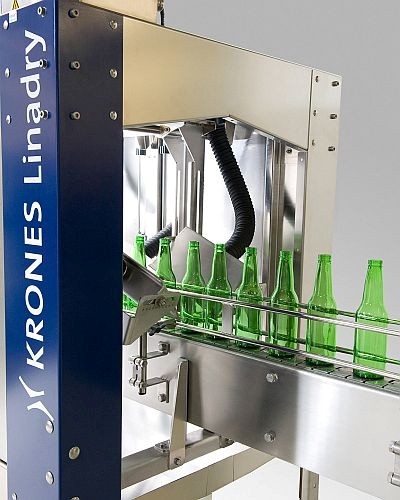 der that Krones AG, Neutraubling, Germany, has now recorded its one-thousandth Linadry sold within six short years. On moist containers, it’s simply not possible to apply these types of label correctly. The Linadry can be relied upon to remedy this. With a full-bottle inspector, too, the Linadry provides lasting support for the monitoring unit’s efficiency. Installing a container drier upstream is in many cases prudent or even essential in order to assure optimum functionality of a labeller or a full-bottle inspector (FBI).
der that Krones AG, Neutraubling, Germany, has now recorded its one-thousandth Linadry sold within six short years. On moist containers, it’s simply not possible to apply these types of label correctly. The Linadry can be relied upon to remedy this. With a full-bottle inspector, too, the Linadry provides lasting support for the monitoring unit’s efficiency. Installing a container drier upstream is in many cases prudent or even essential in order to assure optimum functionality of a labeller or a full-bottle inspector (FBI). This is because with its flexibly adjustable air jets, the Linadry can be relied on to blow-dry both PET and glass containers, thus enabling labelling/inspection to be flawlessly accomplished. To simplify operator control, visualisation of the container drier is integrated into the touch-screen of the downstream labeller or full-bottle inspector. Besides glass and PET lines, more and more canning lines are also being equipped with a Krones Linadry. The field-proven Airknife tubular jets are used here for improved blow-drying of the base or lid of the can.
The Linadry can handle almost any container. The modularised system is suitable for cylindrical containers and special-shaped bottles alike. This means up to 72,000 containers an hour can be dried by using selectively targeted air routing. The air jets can be simply and reproducibly adjusted in both height and position. In the case of containers with a crown closure, the first jets are positioned to ensure that the residual moisture under the crowns is purposefully removed, in order to prevent corrosion.
The basic length of a compact dryer module in stainless steel construction is only 1.5 metres. Depending on the needs and requirements posed for residual moisture, the machine can be expanded to incorporate additional modules. The Noise Protection Class can likewise be varied down to 83 dB, to suit the specific requirements concerned. There’s also a new option for foam-cleaning the machine. In addition, the range of dryer modules has recently been extended to include a transfer module, with which the distance from the labeller can be reduced.





